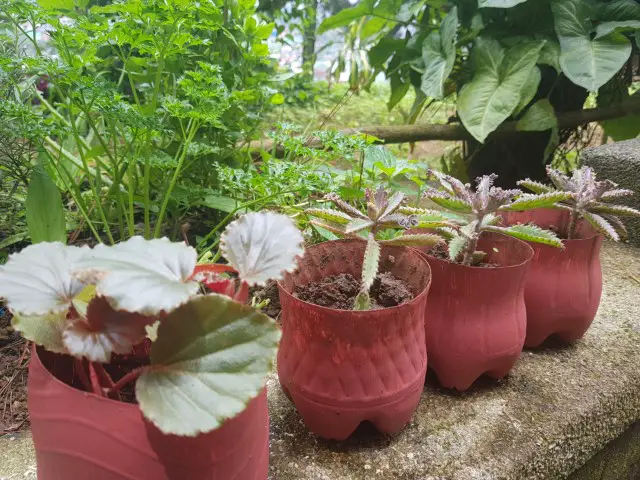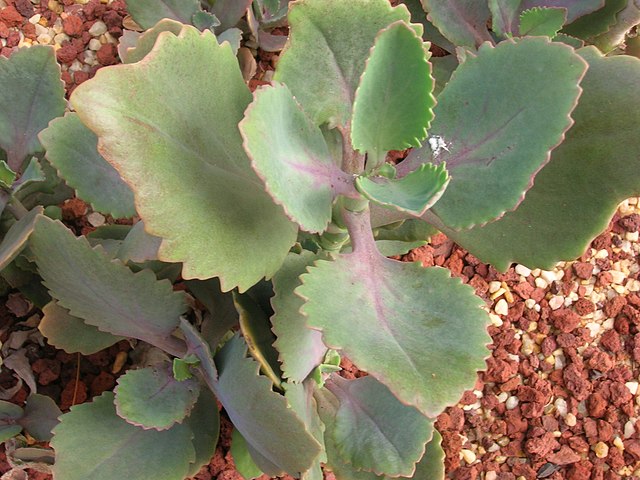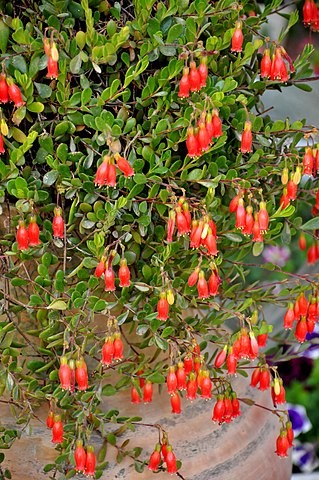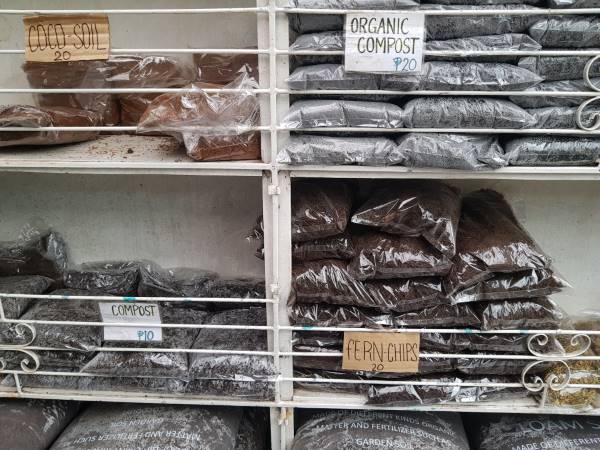Kalanchoes are amazing succulents that add colors and beauty to your home gardens. They are very popular for their low maintenance and care requirements. You can manage to grow Kalanchoe Succulents easily, even if you lack a green thumb and often kill your plants.
Though Kalanchoe Succulents can tolerate a period of neglect, that doesn’t mean you should forget your plants completely. There are certain conditions when your Kalanchoes require attention and care for their good growth and survival. Kalanchoes are slow-growing succulents and they barely require repotting. However, there are certain cases in which it is mandatory to repot them.
No matter how much experience you have got on growing Kalanchoe Succulents, the process of repotting always seems a bit hard. If you want your Kalanchoes to grow healthy for years you must spare some time for repotting them. But You must know when and how to repot your Kalanchoes to ensure their health and survival.
When should I repot my Kalanchoe Succulents?
What is the right time to transfer Kalanchoe Succulents in new containers? Here I’ll tell you when you must repot your Kalanchoes.
Let’s just break into the details.
As a general rule repot after every 2 years
A general rule of thumb is that you must repot your Kalanchoe Succulent every two years. This way you will provide your plants a new and fresh growth medium for better growth.

Once a Kalanchoe spends 2 years of its life in the same container, transfer it into a new container containing fresh potting mix. Even if your plants are growing healthy with no obvious problems, still you should repot them. The transfer of Kalanchoe Succulents in a new potting medium will ensure their better and luxurious growth in the upcoming years.
Transfer your Kalanchoe Succulent in new containers after you purchase them
You purchased an all-new Kalanchoe from the local nursery or market and you are pretty much excited. Right? Make sure you transfer your new guests into the fresh growth medium and better pots.

The Kalanchoe Succulent that you buy from the local nurseries or markets come in very small, cheap, black pots. The disadvantage of black pots is that they absorb more heat which can be damaging to the plants. Moreover, these pots are too small to provide enough space for the growth and spread of your plants.
I will recommend using clay or a terracotta pot to transfer your plants because they give exceptional results by providing better drainage.
Every time you purchase a new succulent transfer it immediately into the new growth medium. Your plants will get plenty of nutrients and a healthy environment in the new pots for their growth and development.
Note: Transfer your Kalanchoe Succulents into the new containers right after you buy them from the market. Generally, don’t wait for more than 2 weeks for transplanting them.
Repot when the growing season begins
It is recommended to repot your Kalanchoe Succulents at the beginning of the growing season. The repotted Kalanchoes will get plenty of nutrients from the fresh growth medium in the active growing phase and perform better.
Repot when Kalanchoe Succulents appear unhealthy
When your Kalanchoes appear unhealthy and they start losing their normal green, thick, and plump leaves, you must try to identify the problem as soon as possible.
Look for any possible insect pest infestations. If there are no bugs, double-check if you are giving proper light and watering to your plants.
If there is no problem with the light and watering schedules, check the roots of the plants. In case the roots appear decayed or damaged, trim them as required and transplant the plants into new containers.
Repot when the potting mix dries out rapidly
Does your soil medium dry out too fast?
If yes! Then it’s time to repot your Kalanchoe Succulents.
The medium in which you are growing your Kalanchoes dries out quickly and no longer retains water, is a sign you should shift your plants to a new growth medium. The growth medium which drains faster is no longer good for your plants.

Though Kalanchoes like soil with better drainage capacity, the soil must retain moisture for some time to let the roots absorb the plenty of moisture for their normal growth. Transfer your Kalanchoe Succulents in a fresh growth medium that must be a mix of soil and perlite in 1:1 to provide good drainage.
Repot when your Kalanchoe Succulents are root bound
Kalanchoe will become root-bound when the pots are too small for the plants to grow and spread. If you are growing your Kalanchoes in small-sized containers the plant roots will not have sufficient space to spread as a result the roots will outgrow the containers.
The roots of succulent will appear tightly packed and come out of the drainage holes. Repot your Kalanchoes in larger pots when they become root-bound.
Choose an appropriately sized container for your Kalanchoes. If the container you choose is very small for the plants, they will become root-bound in no time and start overgrowing the containers. A large-sized container will have plenty of space for the roots to grow and spread.
Benefits of repotting Kalanchoe Succulents
Why should I repot my Kalanchoes? What are the benefits of repotting?
It is always a great idea to repot your Kalanchoe Succulent because there are several benefits of repotting.
Improved health of the plants
Repotting will improve the health of the plants. A fresh growth medium will provide plenty of nutrients for the plants to grow healthy.
You can throw away damaging insect pests
Insect pests can cause substantial damage to your Kalanchoes if left unchecked. By repotting your Succulents you can check for the possible hideouts of insect pests in the plants. If you find any insect pests clinging on the plants, you must transfer them to the new growth medium. Repotting your Kalanchoe Succulent will not only help you to get rid of these creepy pests it will also make the plants grow luxuriantly in the new growth medium.
You can get rid of the poor potting medium
You must change the growth medium when it is no longer suitable for your Kalanchoes, and the plants are growing poorly.
When the growth medium has poor drainage, shift your Kalanchoes into a well-draining growth medium. A poorly draining potting mix will result in water build-up that will ultimately root decay. The roots will also become susceptible to fungal growth and rotting.
Whenever you buy new plants, it is recommended to shift them from the nursery soil into a standard succulent potting mix with better drainage and nutrition.
Trimming of damaged or decayed roots
You can examine the plant’s root zone to find out if the roots are healthy. In case the roots appear damaged or decayed, trim them as desired to ensure healthy root growth.
You can get rid of low-quality and poorly draining containers
Another advantage of repotting is that you can change the poorly draining or small-sized containers with better ones.

When your Kalanchoes are grown in such pots that have poor drainage capacity, you should transfer them to containers with good drainage. A poorly draining container will make the roots succumb to fungal growth and root rot.
It is also advised to shift the plants to bigger containers when the roots start overgrowing. A bigger sized container will provide more space for root growth.
How to Repot Kalanachoes?
Here I’ll give you a guide on how you can repot your Kalanchoes.
Let’s just begin with the repotting process.
- Carefully dig the soil around the root zone of the plant. Hold the pot with one hand and gently take the plant out of the pot with the other hand.
Note: Be very careful while digging the soil, you must not damage the roots. - Remove the excessive soil or debris adhering to the root zone by gentle shaking. Remove any damaged, black, or mushy roots.
Note: It is ok if some soil remains adhering to the root zone don’t try to clean the roots completely by vigorous shaking. You may end up damaging the roots. - Fill the terracotta or clay pots (must be at least 2 inches larger than the previous pot) with standard succulent growth medium. Put some pebbles at the bottom of the pot before filling the growth medium. You can add some sand or perlite to the soil mix for better drainage.
- Place the plant at the center of the growth medium and gently firm the soil around it.
- Water well until the soil becomes moist.
Place the pots near a sunny window where they receive plenty of sunlight for 5 to 6 hours a day.
Bottom Line
In conclusion repotting doesn’t require a lot of effort and it can do wonders. You love your Kalanchoes and you surely want to make them grow healthy. Spare some time for the regular inspection of your plants and repot them when it is necessary.
Generally, you must report your Kalanchoes every two years. If your plants are growing healthy, you may find it unnecessary to repot them, but still, you should repot them in any case.
Now you know when and how you should repot Kalanchoes. Transplant your Kalanchoes in all-new containers and a fresh growth medium to give them a new and healthy beginning.
Enjoy planting!




